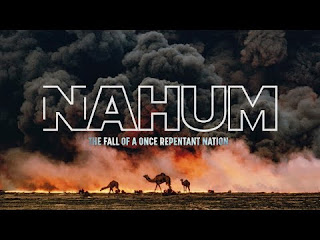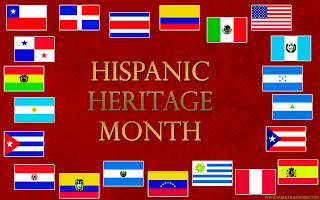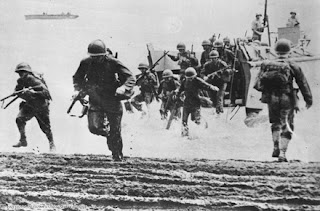Music is a language we all speak. It doesn’t matter what
language the lyrics are in, the melodies and harmonies speak to each of us in a
universal language. Music is also a big part of any culture and the Hispanic
culture is no different. In fact, I’d say music is extremely important. Have
you ever been to a Latino home for a party when the radio wasn’t playing? I
haven’t. In fact, most Hispanics and Latinos won’t considered it a party until
there is music they can dance to. So when I asked my Facebook friends for their
advice about who in music has been influential in Hispanic and Latin
communities, the response was strong. It was hard to pick just three but I feel
I have chosen three performers whose music has a lasting impression on his audience.
First, Vicente Fernández was born February 17, 1940 in
Huentitán el Alto, Guadalajara Jalisco, Mexico. He is called El Rey de la
Musica Ranchera (The King of Ranchera Music). Ranchera music is a genre of
traditional Mexican music which dates back prior to the Mexican Revolution and
become closely associated with the mariachi groups which evolved from Jalisco,
Mexico. Fernández spent his early years on his father’s ranch. At 8, he began
playing the guitar and singing ranchera music. He begab to sing in contests at
local festivals and won many times. By 1960, he devoted himself full time to
music. His big break came in the spring of 1966 when Javier Solis, the El Rey
del Bolero Ranchero died and Discos CBS offered Fernández a recording contract.
He would have a long and successful career until he retired from live
performing on April 16, 2016. Even though he retired from performing, he
continues to record and publish music. While he was usually accompanied live by
a mariachi group, he is not considered a mariachi musician because he does not
play an instrument live. His greatest hit was Volver, Volver (1972). It is a song about going back to a love her
left behind. Fernández sings the song with such emotion you can hear the tears
in the narrator’s voice. I listened to this song twice. Once without the
English translation and once with the translation, the emotion is so raw in the
song, you can’t help getting choked up. I read several comments online which
describe family functions and a drunk dad or uncle will eventually play this
song and sing along. One commenter said “We all have that one dad or tio that
plays this and cries.” While another commenter said “Is this like the universal
sad song for Hispanic families? Every single woman in my family cries when this
plays.” Volver, Volver reminds me of
many country and rock songs where a man realizes he was wrong to leave and is
coming home…if she’ll let him. Vicente Fernández is currently 77 years old.
When he does pass away, I know the response from his fans and the music world
will be resounding.
Second, Juan Gabriel was born Alberto Aguilera Valadez on
January 7, 1950. He was a beloved Mexican singer and songwriter. Nicknamed
Juanga and El Divo de Juárez, he was known for his flamboyant style, breaking barriers
within Mexican music. He is considered one of the best and most prolific
Mexican composers and singers of all time. A true pop icon. At 13, he composed
his first. In the 1960s, he would perform at various bars around Juárez,
Mexico. While trying to achieve a recording contract, he was wrongfully accused
of robbery. He spent a year and a hald in prison until he was released due to
the lack of evidence. He chose his stage name Juan Gabriel in honor of Juan
Contreras, his mentor, and his father, Gabriel. He released his first studio
album in 1971 with his first of many hits, No Tengo Dinero. He had successful
hit after another. He became a world renowned singer performing in a wide
variety of styles from mariachi to pop to disco. His lyrics often spoke of
heartbreak and romantic relationships. Although he never married, he had 6
children. Four of them with Laura Salas whom he describes as “the best friend I
ever had.” When his sudden death of a heart attack was announced on August 28,
2016, the shock rippled through his fans. Even though I wasn’t familiar with
his work, I remember the impact the news of his death had. One of his most
well-known songs is Querida, a song
about a lost love and begging her to come back. The song sounds like a very 80s
pop love song but it is one that still sounds good and resonates decades later.
Another song is Amor Eterno, a song
he wrote for his mother after her death. It was first recorded and made famous
by Spanish singer Rocio Durcal. It has become a standard song at funerals for
those who refuse to say goodbye. He would call the song a prayer of love and a
mediation on love. It is a song about the grief and life after a loved one has
passed. Both songs and many others are a testament to the versatility of this
man’s amazing talent.
Third, Carlos Santana was born July 20, 1947 in Autlán de
Navarro, Jalisco, Mexico. He learned to play the violin at the age of 5 and the
guitar at the age of 8 under the tutelage of his father, a mariachi musician. The
family moved around for years before eventually settling in the Mission
District of San Francisco, California. He graduated in 1965 from Mission High
School and was accepted at both California State University, Northridge and
Humboldt State but chose not to attend college. He was influenced by artist of
the 1950s, Ritchie Valens, B.B. King, John Lee Hooker with musical influences
of jazz, folk, and rock and roll. He became known for Latin infused rock, jazz,
blues, salsa and African rhythms. He began his career with the Santana Blues
Band, which was later shortened to Santana, and quickly gained popularity in
the club circuit of San Francisco. A memorable performance at Woodstock in 1969
would lead to a recording contract with Columbia Records. He is most known for
covers of Oye Como Va (written and
original recorded by Tito Puente in 1963) and Black Magic Woman (written by Pete Green and originally recorded by
Fleetwood Mac in 1968). Santana would see records sales sag in the 1980s as the
tastes in music were changing. He would see a resurgence in popularity in 1999
with the release of his corroboration album, Supernatural. This album is how I was truly introduced to Santana
with the song Smooth with Rob Thomas
of Matchbox Twenty. Seventeen years away from the charts, Supernatural would help him achieve hits and numerous Grammy
awards. In 2002, he’d released another corroboration album, Shaman, which didn’t have the same
success as Supernatural. However it
would produce 2 radio friendly hits including The Game of Love with Michelle Branch. He continues to create music
and release albums experimenting with sounds and styles. Santana has been cited
as an influence by Prince and Kirk Hammett of Metallica. I think he will
continue to influence many future guitar musicians as he experiments and
expands his style.
In conclusion, Santana once said “There’s a melody in
everything. And once you find the melody, then you can connect immediately with
the heart.” The music of these men are perfect examples of melodies which
connect with the heart. It doesn’t matter what language it is in, the melody
drives the emotion that words will often fail to convey. There are so many more
examples of amazing music which transcends language and culture. Listening to
the story told in these songs reminds me that no matter what culture we are
form, we all experience love, hurt, grief and joy. You may not understand the
words but you can hear the emotions in these songs and the musical notes pull
at your heart in a language we all can understand.





































